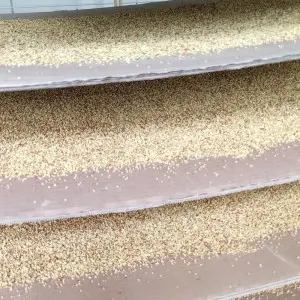Aug . 11, 2024 06:42 Back to list
Effective Techniques for Harvesting Pear Pollen in Agricultural Production and Research Settings
Methods of Collecting Pear Pollen in a Factory Setting
Pear cultivation is an important agricultural practice, especially in regions where this fruit thrives. The process of pollination is crucial for the production of pears, as it directly influences fruit set and quality. In controlled environments such as pollen collection factories, various methods are employed to effectively gather pear pollen. This article discusses the primary techniques used in collecting pear pollen, emphasizing their efficiency and importance in enhancing orchard productivity.
1. Manual Collection
One of the oldest and most traditional methods of collecting pear pollen involves manual collection. During the flowering season, trained workers carefully hand-collect pollen from mature flowers using fine tools like tweezers or specialized brushes. This method, while labor-intensive, allows for the selection of high-quality pollen from specific trees. Workers typically operate during peak flowering periods in the early morning when pollen is most abundant and viable. Manual collection is advantageous for maintaining genetic diversity, as specific cultivars can be chosen according to pollination needs.
2. Mechanical Collection
In recent years, technology has advanced the efficiency of pollen collection through mechanical means. Automated devices, such as vacuum pollen harvesters, are now employed in many factories. These machines utilize suction to gather pollen from flowers without causing damage to the blossoms. The collected pollen is then filtered and stored in controlled conditions to maintain viability. Mechanical collection significantly reduces labor costs and increases the quantity of pollen collected within a short time frame, enabling large-scale operations to meet the demands of commercial pear orchards.
3. Cryopreservation Techniques
methods of collecting pear pollen factory

To ensure the long-term availability of high-quality pear pollen, many factories have adopted cryopreservation techniques. This method involves freezing pollen samples at extremely low temperatures, typically using liquid nitrogen. Cryopreservation preserves the viability of pollen for extended periods, allowing for off-season use or the preservation of specific genetic traits. By backing up valuable pollen strains, orchards can manipulate breeding programs more effectively and adapt to changing climate conditions.
4. Pollen Processing and Quality Control
After collection, the pollen undergoes processing to enhance its storage life and usability. This includes drying the pollen to a specific moisture content and packaging it in airtight containers. Quality control measures are critical in this phase, as contamination or improper storage can lead to reduced viability. Advanced scientific methods, such as microscopy and germination tests, are employed to ascertain the quality of the pollen before it is distributed to pear growers. Ensuring high-quality pollen is essential for successful pollination and optimal fruit yield.
5. Education and Training
To fully benefit from these methods, factories invest in educating workers about the best practices for pollen collection and handling. Training sessions cover topics such as identifying optimal flowers for pollen collection and understanding the physiological needs of different pear varieties. This investment in human capital ensures that the collected pollen meets the rigorous standards required by end-users, including both commercial orchards and researchers in the field of plant genetics.
Conclusion
The collection of pear pollen within a factory setting involves a blend of traditional techniques and modern innovations. From manual collection and mechanical methods to advanced preservation techniques, each approach plays a crucial role in ensuring the availability of high-quality pollen for pear growers. As the demand for pears continues to rise globally, optimizing pollen collection methods will be essential for enhancing yield and supporting sustainable agricultural practices. The investment in technology and education will ultimately foster a more resilient and productive pear industry.
-
Plant Pollen Analysis: Fast & Accurate with GPT-4 Turbo
NewsAug.02,2025
-
KiwiPollen with GPT-4 Turbo: AI Health Supplement Boost
NewsAug.01,2025
-
Pollen Peach Tree AI Management with GPT-4-Turbo
NewsJul.31,2025
-
Eco Fruit Paper Bags for Peak Freshness | Durability Focused
NewsJul.31,2025
-
Pollen Peach Tree for Pure Pollination and High-Quality Peach Pollen
NewsJul.30,2025
-
Premium Cherry Pollen for Pure Pollination & Different Types
NewsJul.30,2025